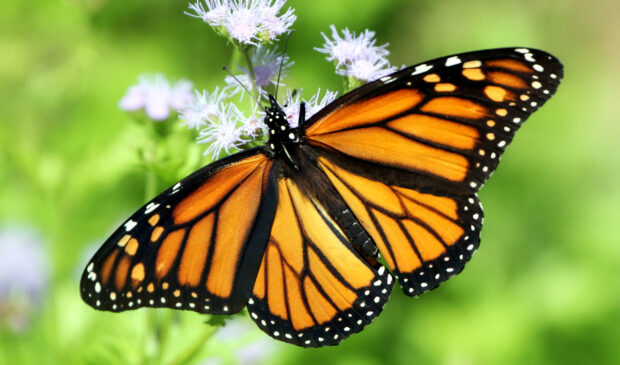Development and climate change continue to threaten Balcones Canyonlands creatures
Tuesday, May 14, 2024 by
Elizabeth Pagano Stewards of the Balcones Canyonlands Preserve checked in on the status of its most vulnerable residents at their last meeting.
Debra Scott, who is the environmental project manager for Travis County, filled in members of the Balcones Canyonlands Conservation Plan Coordinating Committee on species that are “up and coming on the endangered species list.” In Travis County, there are seven endangered species, one delisted species (the black-capped vireo) and 27 “species of concern.” In addition, there is a threatened species that is not covered by the BCCP, the Jollyville Plateau salamander.
“This is a great time to address conservation at a wider scale across the county, because the county is experiencing rapid urbanization and habitat loss, which is leading to greater local species decline,” said Scott, who explained that there are currently six species that are being considered for listing. They are:
- Tricolored bat (Perimyotissubflavus – proposed endangered)
- Texas fatmucket (Lampsilis bracteate – proposed endangered)
- Pedernales River Springs salamander (Eurycea sp. – under review)
- Monarch butterfly (Danaus Plexippus – candidate)
- American bumblebee (Bombus pensylvanicus – under review)
- Southern Plains bumblebee (Bombus fraternus – under review)
With the majority of her presentation centering on the six species above, plus how to protect them, Scott noted that they will not be covered by the Balcones conservation plan and explained that they were looking at new ways to protect the species. The U.S. Fish and Wildlife Service has a number of programs, including a new option known as a “Conservation Benefit Program” that will allow the BCP to manage its land to conserve and protect threatened species before they get an official federal listing.
Scott said that the rumor is that there will be an endangered species listing for the tricolored bat by late this summer. The bat, which can be found in Travis County year-round, is threatened by white-nose syndrome as well as the loss of places to roost and seek refuge and decreased availability of prey. On the preserve, Scott said conservation measures could include more data about the bats and their habitat, additional tree and cave protection and restoration and white-nose syndrome decontamination.
The Pedernales River Springs salamander, which was recently discovered and lives in only three Texas counties, is currently being reviewed by U.S. Fish and Wildlife to determine whether it needs endangered species protections.
“Based on the limited location and the high level of threats around this species, there’s probably a high risk for extinction. There’s a lot of development occurring in that area. The salamander could be affected by poor water quality as a result of that development, water scarcity (and) water availability would be a big one … and those are exacerbated by climate change,” she said.
Also exacerbating the situation, said Travis County Commissioner Brigid Shea, is the 1,400-acre Mirasol Springs development, which is proposed on the identified habitat of the salamander. Shea noted developers are “seeking permits for extensive groundwater pumping and a request to divert the Pedernales River for the development.”
“It’s a huge threat, and it’s imminent,” Shea said. “There’s a lot of urgency around this one.”
Scott confirmed five of the 10 known habitats for the salamander are within the site of Mirasol Springs.
Scott also talked about the Texas fatmucket, a freshwater mussel that is being considered as an endangered species. Despite the threats to the mussel, the city and county own most of the land around its habitat and are able to conserve it.
In addition, the monarch butterfly is considered a candidate species, which means that endangered species protections are warranted but prevented by higher priorities. Both the American and Southern Plains bumblebees are currently being assessed by the U.S. Fish and Wildlife Service to determine what protections are warranted. Scott noted that protections on the American bumblebee in Texas would be the most beneficial to the species, as Texas has the highest populations. On the other hand, Texas has the largest population declines for the Southern Plains bumblebee.
The Jollyville Plateau salamander is already officially considered threatened and is found in Travis and Williamson counties. Its main threats are urbanization and the poor water quality that results from it. Though it has protected habit on the preserve, Scott explained that there was additional habitat that is not yet protected and monitored. She said efforts to preserve the habitat and acquire additional land could help the salamander.
Photo made available through a Creative Commons license.
The Austin Monitor’s work is made possible by donations from the community. Though our reporting covers donors from time to time, we are careful to keep business and editorial efforts separate while maintaining transparency. A complete list of donors is available here, and our code of ethics is explained here.
You're a community leader
And we’re honored you look to us for serious, in-depth news. You know a strong community needs local and dedicated watchdog reporting. We’re here for you and that won’t change. Now will you take the powerful next step and support our nonprofit news organization?











